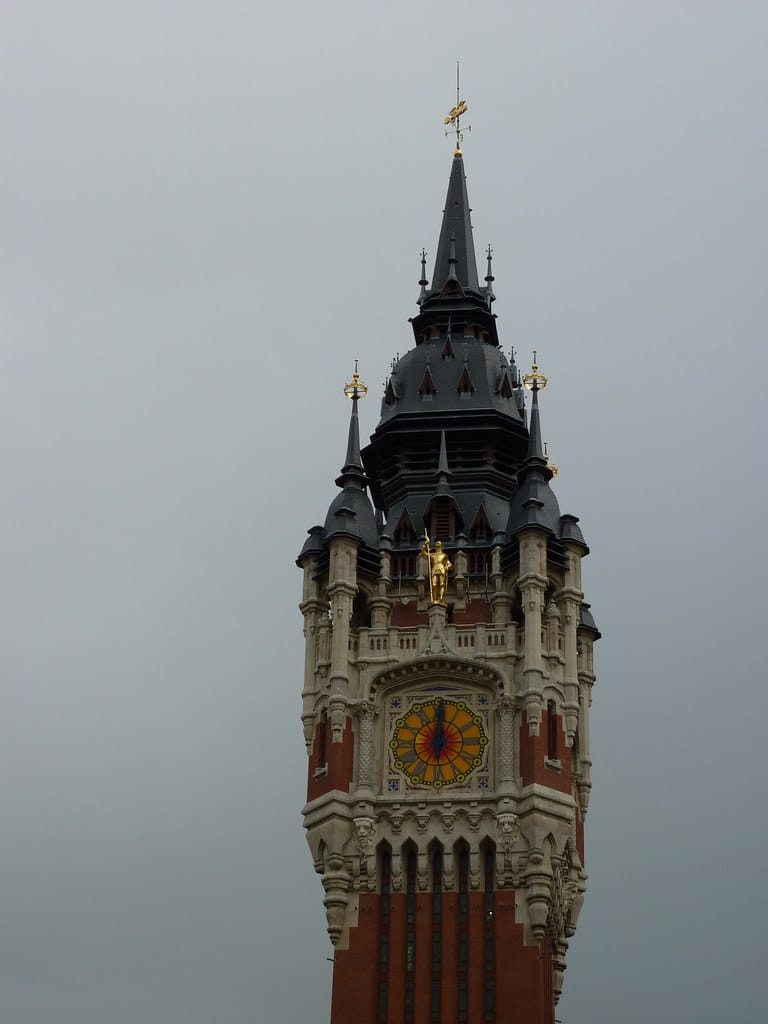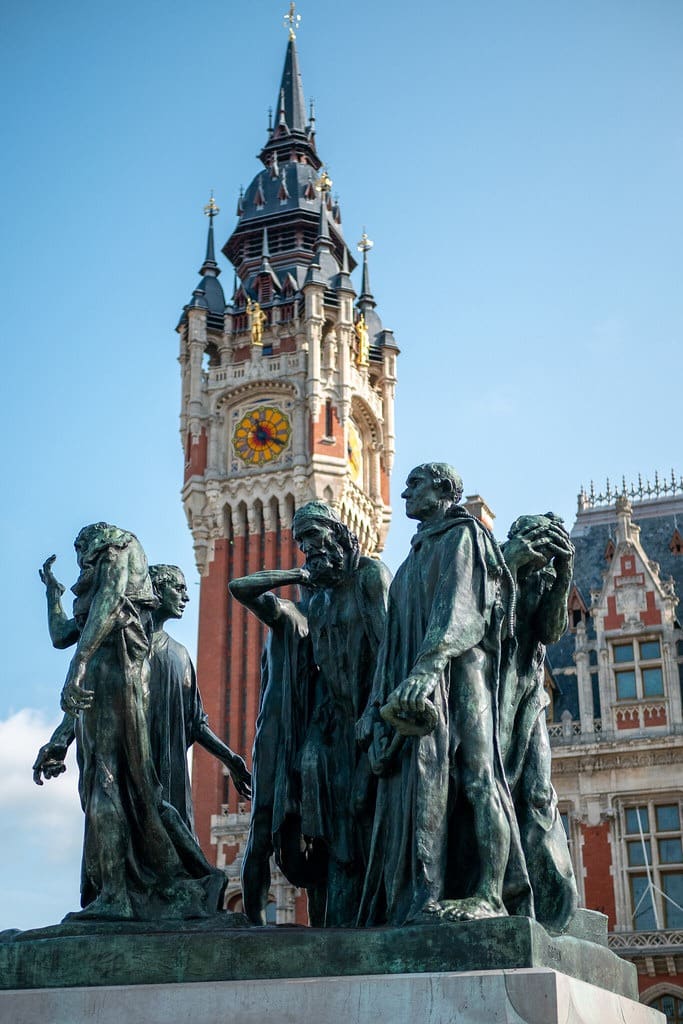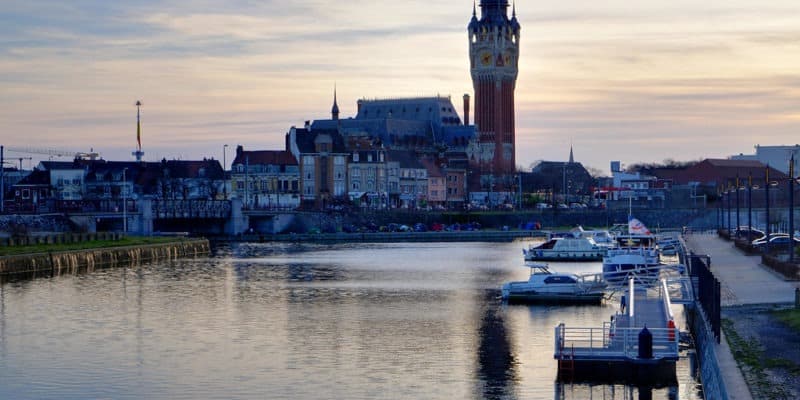Recognizable from afar by its flamboyant Gothic style and majestic tower, the belfry of Calais Town Hall is one of the best-known belfries in the Hauts-de-France region, alongside the Arras belfry.
History of the belfry
The belfry of Calais Town Hall has a captivating history, rich in major historical events. Work on its construction began in 1911, under the leadership of architect Louis Debrouwer. However, the building we admire today was shaped by the historical circumstances of the time. In fact, work had to be interrupted in 1914 with the outbreak of the First World War. It was not until 1923, after an enforced pause of almost a decade, that work resumed. Despite these challenges, the project went ahead and construction was completed in 1925. The inauguration was a moment of pride and relief for the people of Calais, marking a turning point in the process of rebuilding the town after the ravages of war.
At an impressive 75 metres high, the belfry tower dominates the Place du Soldat Inconnu and the Calais townscape.
Its imposing architecture and tumultuous history make it a true symbol of resilience and perseverance. In 2005, the Calais Belfry was recognized byUNESCO as an important part of the world’s cultural heritage. This recognition was granted as part of the inclusion of the“Belfries of Belgium and France” on the World Heritage List. This group comprises over 50 towers, including the Douai belfry, which are prominent symbols of communal freedoms in this part of Europe. Not only is the belfry a popular tourist attraction for its impressive architecture and panoramic views, it is also an emblem of the region’s history.
Belfries, like the one in Calais, were traditionally symbols of power in the towns of northern France and Belgium. They were often used to watch over the surrounding area and sound the alarm in case of danger.

Calais belfry tower
Belfry architecture
The architecture of the Hôtel de Ville belfry in Calais perfectly reflects the Gothic style, an artistic movement typical of the late Middle Ages. The elegance and complexity of its architectural details are a demonstration of the skill and finesse of the craftsmen of the time. This style can be found in many buildings in the Haut-de-France region, such as Amiens Cathedral.
The belfry’s tower is richly adorned with gargoyles and pinnacles, which not only add an aesthetic touch to the whole, but also have a practical function, allowing rainwater to drain away from the structure’s walls. These Gothic architectural details add a dimension of mystery and grandeur to the building, evoking a bygone era. The crown of the belfry is a campanile, housing a carillon of 39 bells. For almost a century, the melodious sound of these bells set the rhythm of Calais life, adding a touch of poetry to the city’s atmosphere.
The belfry and the Bourgeois de Calais
The belfry is also distinguished by its remarkable set of statues representing the Six Bourgeois de Calais. These statues, located on the façade of the building, are the work of the famous sculptor Auguste Rodin and represent a moment in the town’s history during the Hundred Years’ War. According to legend, in 1347, during the siege of Calais by the English, six burghers volunteered to be handed over to the King of England, Edward III, in exchange for the lifting of the siege. These men, ready to sacrifice their lives to save their fellow citizens, were finally spared thanks to the intervention of Queen Philippa de Hainaut.

Les Bourgeois and the Calais belfry
Visit the belfry
If you’re visiting Calais, we highly recommend stopping off at the Hôtel de Ville to explore the belfry. The belfry is open to the public, and climbing the 194 steps to the top is like stepping back in time. The climb is punctuated by various exhibits tracing the city’s history, from its earliest days to the modern era. Once at the top, visitors are rewarded with a breathtaking panoramic view of the town of Calais, the Pas-de-Calais Strait and, on a clear day, the white cliffs of Dover in England. Beyond the coast, you can admire the surrounding countryside. This view offers a unique perspective on the region’s geography and landscape.
Geographical location
O.M.
